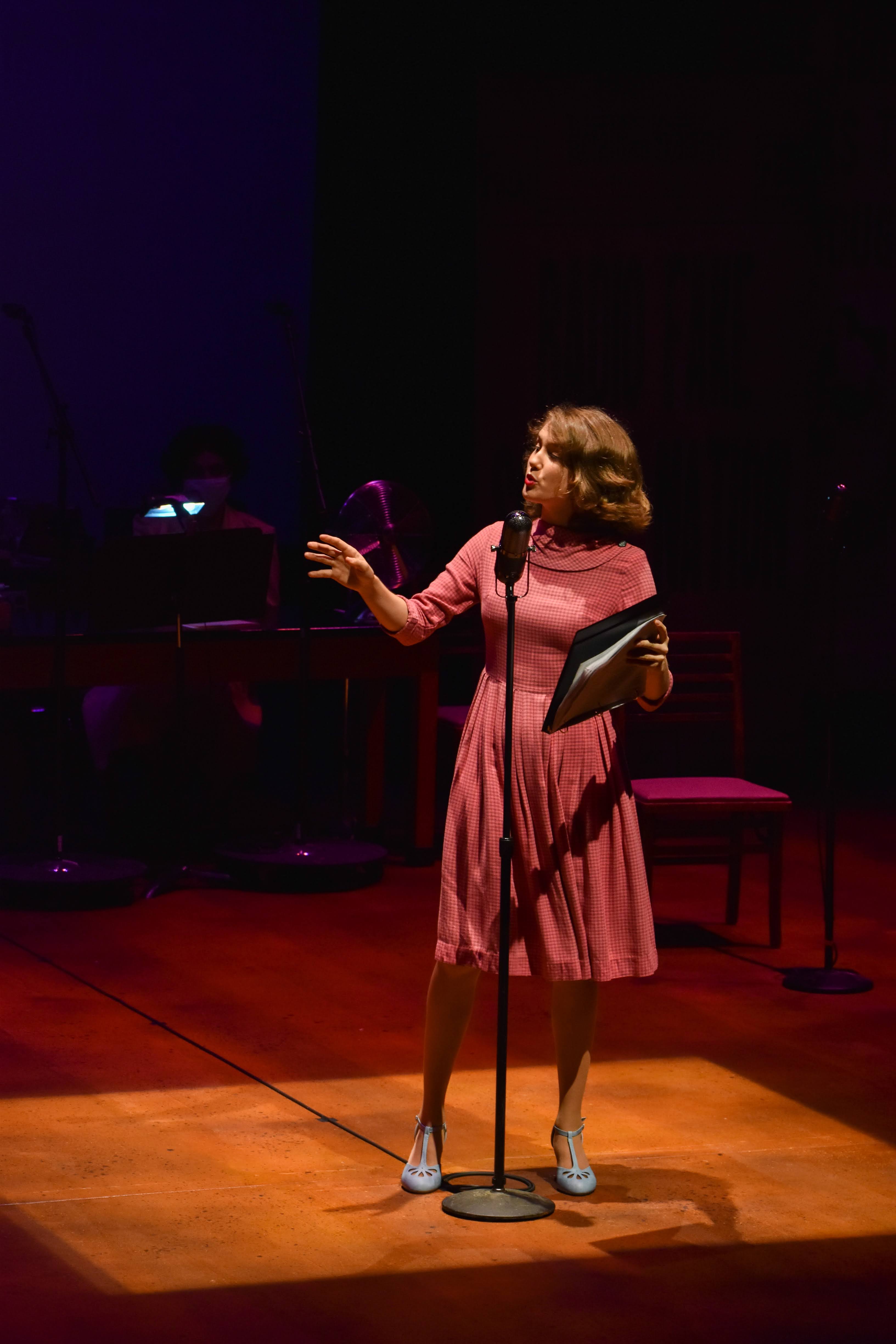
The Tower Player’s bring to the stage a question appropriately timed for the day and age of COVID-19:
“Has the world gone mad? In a word: Yes.”
“War of the Worlds: the Panic Broadcast” premiered on Wednesday, Sept. 30 at 7:30 p.m. Directed by Assistant Professor of Theatre Christopher Matsos, the play examines hysteria and how the media contributes to panic.
Along with the Wednesday premiere, additional shows will be Thursday through Saturday evenings at 7:30 and Sunday afternoon at 2 p.m. Audience members are asked to wear masks for the duration of the performance. There will be no intermission.
The play recreates the famous radio drama about martians terrorizing a New Jersey town. The drama is based on a short story by H.G. Wells and was adapted for radio by Orson Welles in 1938. The original broadcast was so convincing that many listeners believed the nation was under attack by extraterrestrials.
In the play, the action is presented through news reports and eyewitness accounts. It opens 10 years after the infamous night of hysteria. Freddie Filmore, played by junior Sebastian Pestritto, produces a “radio-play within a radio-play.” Fillmore’s studio recreates the original broadcast by Orson Welles.
Fillmore takes the audience back to Welles’ station, where the scheduled evening of dance music is continually interrupted by reports of disturbances on Mars and the discovery of a strange metal object in New Jersey.
The action heightens when Carl Phillips, played by sophomore John Tassef, goes to the scene of the spaceship landing to interview and report first-hand what he sees. Finding a mob of disturbed people, Phillips is shocked to report metal aliens climbing out from a spaceship.
Though the play is almost completely dialogue driven, this doesn’t detract from the energy of the performance. With only eight cast members, the actors transition between characters and time periods throughout the show. The actors switch back and forth in the efficient radio style, with reporters, studio announcers, and bystanders contributing in an interwoven exchange that is captivating to watch.
The audience feels immersed in both the worlds of radio and the town’s hysteria. Vintage “applause” signs light up on cue and foley artists—radio sound engineers—create onstage sound effects. Old-fashioned radio microphones spaced out on the stage floor constitute the backbone of the set.
A majority of the lines are read off the script, staying true to how radio drama would have been performed, said senior Mikela St. John, an actress in the play.
St. John, who plays one of the foley artists, said it was a very unique opportunity to create sound effects on stage.
“There was lots of experimentation,” St. John said. “For every sound effect, I had to ask, ‘What makes this noise? ‘What makes a ticking noise?’ Apparently a gavel does.”
Tassef said he enjoys doing old-style voices.
“The entire thing is voice acting, essentially,” Tassef said.
At times, there is very little action within the scenes, however, the performers do an excellent job of creating excitement in each one. The light design fills the stage with different colors depending on the mood of the scene, giving the audience the experiences of fire, peace, and despair before the play is finished. Projections of metal martians capture the imagination of the characters.
As the alien attacks escalate, freshman Lilliana Cardwell, who plays Professor Peirson, describes a world much too similar to the quarantined one we live in now: empty streets, silent shop windows, and strange reactions when people live a normal lifestyle.
Pestritto said he’s worked hard to make distinction between characters and time periods understandable for the audience.
“I’ve focused a lot on the tone, pitch and manner of the voice, as well as the physicality and tempo of the characters,” Pestritto said. “Playing somebody as famous as Orson Wells was a little intimidating at first, but it’s been a very rewarding process.”
The play culminates in a scene with Welles answering questions—and asking some of his own—in a crowd of angry journalists. Accused of creating mass panic and even causing people to commit suicide all for the sake of entertainment, Welles wonders why so many people believed his drama without stopping to think.
Matsos said the production asks important questions about the media and how people respond to it.
“Think critically about what you hear,” Matsos said. “In this time of elections and COVID, it’s scary how easily things are confused.”
Matsos said he chose the play because of its flexibility.
The actors wear face masks that match their costumes when they are not speaking in an effort to keep everyone healthy throughout the performances, St. John said.
With almost no live theater happening across the country, Matsos said it’s important that the Hillsdale community takes advantage of the opportunity to see the play in person.
“Theater doesn’t have to be shuttered,” Matsos said. “It can still speak to the circumstances.”

